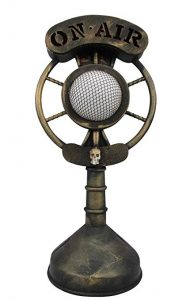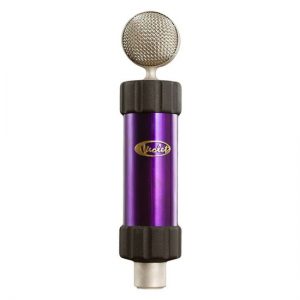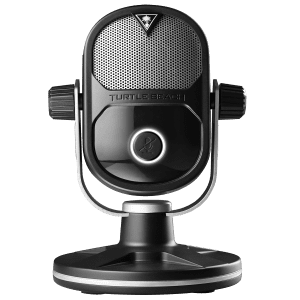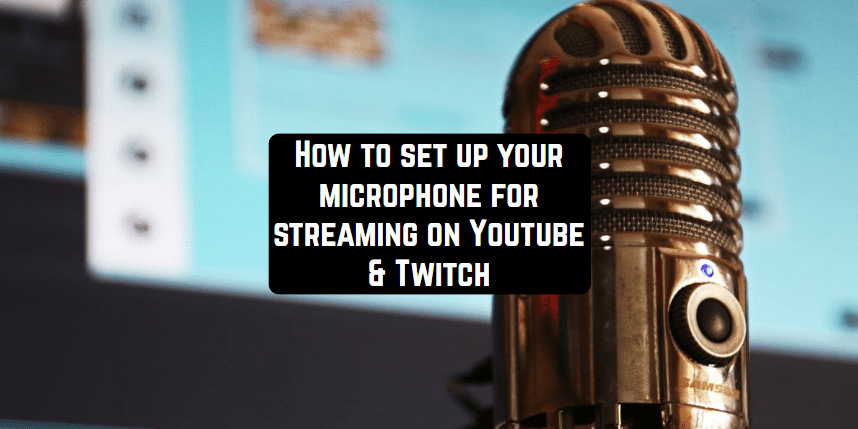Basically, in this article, we are going to talk about how to set your microphone for streaming in general, including Youtube and Twitch (these are just the most popular services for that).
As preparation in advance, you have to make sure that the microphone that you’re using is suitable for talking voice. It should not be too sensitive since if it is, it is going to catch plausive sounds and this is something you don’t want to do. Better use a dynamic microphone since they are not so sensitive, yet capture all the tonalities of your voice.
Usually, the streaming microphone is a plug and play type of microphone. It is compact and easy to take from spot to spot. Nowadays this is a separate kind of streaming microphones which have their own specific characteristics. In this article, we are going to cover, how to set up your microphone for streaming with Xbox, PC, PS1, and PS4.

To connect the mic with other devices you will probably need a mic boom. This is a kind of adapter that makes it possible to connect your microphone both to PC and Xbox.
If there is a nest for the headphones then you should use them. It provides better audio monitoring while streaming and isolates you from external noises. Moreover, you will be able to hear how good your sound on the live stream, which will increase your confidence.
You may also like: Best podcast microphones
For example, you connect your phone to the PC. You see the initial settings on the screen, in most cases, they are not more than simply adjusting the volume and the balance of the sound. It often happens that the mic comes with the special software which allows you to set up the microphone more accurately. They have way more settings and buttons. For example, you can set up your mic to capture lower tones in your voice, or it to make your voice sound brighter or in the mid-range – options vary depending on the software. Here you are also able to add some effect so you don’t have to do it later in the editing program.
There is usually the leverage on the microphone itself allowing you to regulate the volume. In more expensive and advanced product there are also buttons for connection to different audio systems and also to PS and Xbox.

In most cases, there is a button on the mic that gives you a possibility to set up polar patterns. Indicators, demonstrating which pattern is selected, can vary as well. For example, it can be an LED light or no indicator at all (depending on the level of your mic). For the best result when you are streaming together, it is recommended to choose a hyper or super-cardioid mode.
Now let’s talk about sensitivity and how it should work in different streaming situations. The sensitivity button can be placed both on the mic or sensitivity can be adjusted using your PC settings. In fact, you got two options here. The first is high sensitivity, which is useful in cases the mic is placed far from you while the broadcast. Logically, the low sensitivity is better in cases when the mic stands close to your face. Another feature that the streaming mic can use the USB cable nest to receive updates.
Positioning your mic in your room is just as important as the right settings of polar patterns and sensitivity. It is obvious that it may (or may not) isolate your mic from distracting background noises, such as steps, cars, voices and even air conditioners which are also able to create the vibrations which will be perpetuated in the record.

In case if you are streaming with PS4 or PC, push the necessary leverage on the mic (if there is). Make sure your PS4 is powered on, then go to your profile while connecting your mic. Go to settings, then devices, then audio devices, then select “USB headset” turn the microphone and then scroll down to choose the output to headphones and then click on “all audio”. Then make sure the volume control is set to the maximum. Next, select just the microphone level and follow the instructions on the screen to collaborate with your microphone.
To effectively connect your mic to the PC, click on the sound icon at the lower corner of your screen and choose the “sounds” section. Then choose “hardware and sound” then set the mic as a default playback device and do the same for the recording device.
There is also an option to test your microphone before starting an actual broadcast. Just plug in your headphones into your microphone, open the software which comes together with a microphone (or do it through the main settings on your PC) and choose the test mode. After you have checked your voice you can make necessary adjustments right in the program. Being more precise, it depends on your software.

Of course, before streaming, it is important to pay attention to the kind of a mic that you are going to use. No strings attached and you could even use the cheapest USB mic. However, your voice is going to sound dramatically flat and tiny in this case and this is the thing you can’t change in your settings – the only solution is to buy a more qualitative mic.
There is a great software which is called “Voicemeeter banana”. It helps you to better set up your microphone, headphones and all the additional audio devices connected to your PC. There is a voice control pattern where you can make your voice sound as good as possible. By the way, by these improvements, even the sound of the cheapest mics gets significantly better. A quick tip – the lower frequencies sound always better to our ears than the high ones.
Another way to upgrade the sound of your microphone and headphones is to acquire a sound amplifier. Usually, they include the standard cable plugs, so USB-microphone users will probably not be able to take advantage of it. Along with the sound amplifier, you can install the software called “Crystal voice” and together they will make a world of a difference. So sometimes, instead of spending hundreds of dollars on the new equipment, it is enough sometimes to get some additional improving software and devices and you will see how the quality of the sound has changed.
You may also like: Best microphones for gaming & streaming

